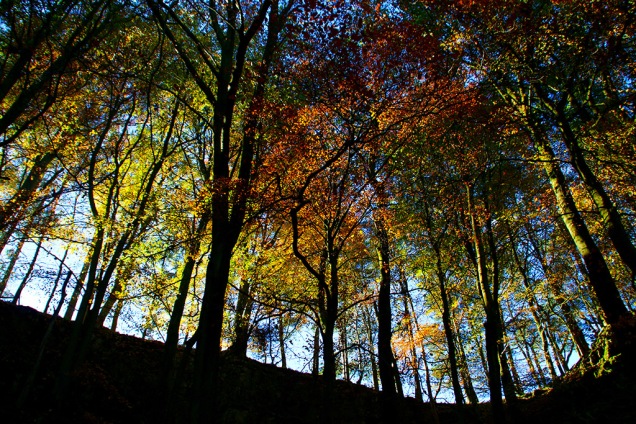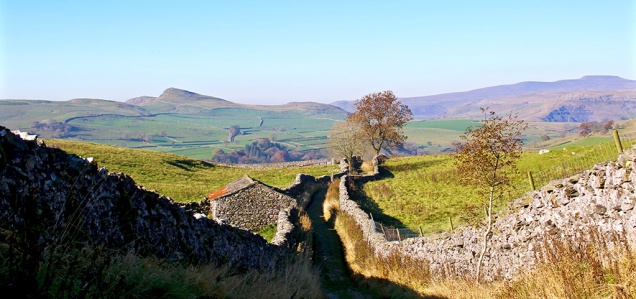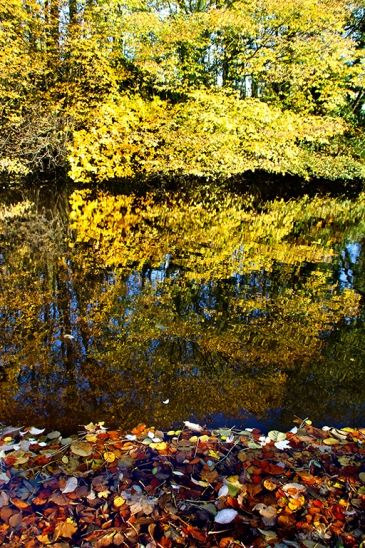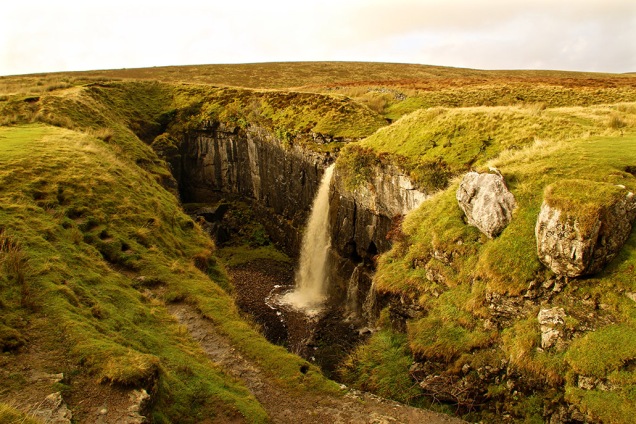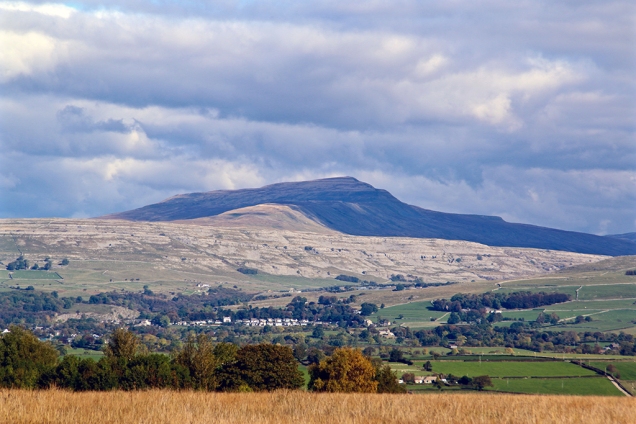The former newsman in me said I ought to go find some dramatic flood shots last week, but then I thought that would only be adding to the misery of the situation. Flooded fields, gushing rivers and waterfalls are often witnessed here in Ribblesdale but further down the valleys, as all that water looks for a way back to the sea, many homes, businesses and lives can be ruined as a consequence.
In Nature, every action causes a reaction. When us humans mess with Nature, be it through greed or naivety, we generally cause mayhem somewhere down the line. Hopefully, a lesson is being learned about what causes flooding besides awful weather: the value of flood plains and why they shouldn’t be built upon; the erroneous river-banking to increase landownership; the cutting down of trees which absorb water; the bad management of moorland; the slashing of funds needed for proper river dredging, etc. Our obsession with cars doesn’t help – we build roads without adequate consideration for natural water flow, create enormous car parks; remove gardens so cars can be parked… the list goes on.
In 2012 I wrote a Diary piece in Dalesman following some more dreadful flooding in Hebden Bridge – here’s an extract:
“ … many residents are partly blaming the management of the nearby Walshaw Moor where it is claimed that excessive burning of the blanket bog has been taking place. The estate owners, [headed by Boundary Mills businessman Richard Bannister] have also created new tracks through the 6,000ha estate which has increased the flow of water down the hillside. Sphagnum moss, Nature’s ‘sponge’ which slows the water coming off the moor, is rapidly disappearing as the estate owners try to create a habitat for red grouse which are then shot.
“The management of this estate has caused Natural England to raise serious concerns in recent years. However, in March, without a clear explanation, Natural England reached an agreement with the landowners over the estate management and dropped legal proceedings, including a prosecution on 43 grounds of alleged damage.
“Residents have set up a Ban the Burn campaign and are asking for support. They say: “We are aware that this is not just a local issue and it is not just about flooding. Sphagnum mosses are the main peat forming species providing vital carbon sequestration and carbon storage, but damaged UK peatlands currently release almost 3.7 million tonnes of CO2, equivalent per year of more than all the households in Edinburgh, Cardiff and Leeds combined.”
Three years on the battle to see sense continues, and the unfortunate residents of Calderdale are still suffering. This isn’t just me having a go at rich folk again. We could all do more… by protesting against stupidity and greed and offering practical help: simple things like helping rid your local beck of rubbish, keeping drains clear of leaves and other debris, making sure your garden has grass, trees and plants and not just covered with impervious Tarmac or decking. Rant over.
The promise of blue sky tempted me out on Tuesday. Mist hung around the tops of the Three Peaks (Penyghent below) as I drove through Ribblesdale to Dentdale. The simple old road bridge over the beck is dwarfed by the viaduct on the Settle-Carlisle line at Cowgill. I turned up the steep, Third-World-road between Dent and Garsdale railway stations where the views in all directions are wonderful. I couldn’t imagine making a living on these wild, boggy moors – it seems some have tried and failed. Returning home via Appersett, which had been cut off by flooding the previous day, a patch of blue sky briefly lit up Stags Fell as though nothing untoward had happened over recent times.
A couple of centuries ago, the main road from Settle to the west went through Giggleswick, Lawkland and on towards Austwick and Clapham. These places are now all bypassed by bigger, faster roads. The old lanes and off-shoots provide a pleasant drive or walk in lovely countryside completely missed by the majority of motorists to this part of the Dales. Those who travelled the ancient route by horse and cart centuries ago would have probably stood mouth agape at the sight of the mainly Elizabethan Lawkland Hall (a private residence with a fascinating history). Visit www.hha.org.uk/Property/568/Lawkland-Hall
My route was only just clear of water problems as I carried on through Austwick (pictured), and on to the hamlet of Wharfe (first photo in blog). The road back to Ribblesdale via Helwith Bridge was impassable the previous day because of flooding.
The following day I ascended – on foot – the steep slope from my house to Winskill Stones. It’s only a mile, but after eating and drinking excessively since my last trip up that hill I needed several ‘photo halts’. The light in the north-west was weird, probably something to do with incoming storm, while above and behind me was a bright blue sky.
A classic Winskill shot beckoned as that gallant tree, seemingly sprouting impossibly from the limestone, and Lower Farm standing out like a beacon set the scene.
Descending back down the side of Stainforth Scar looking towards Settle I saw that the mysterious vanishing tarn was back again. Geological features, ancient field patterns, the rolling Ribble and distant Langcliffe Mill show the development of this area.
Impressive as they were, I felt a tad miffed watching London’s extravagant fireworks on New Year’s Eve. Knocking on £2m spent on 11 minutes, during which time half of London’s population stood with camera phones pointing towards the sky, taking blurry pictures that will end up looking like the remnants of a three-year-old’s birthday party spread. £2m can be raised for the capital’s hedonistic event but ask for brass for London’s homeless or the North’s flood victims and people look the other way. Call me a party-pooper if you want, but I’m sure we used to enjoy NYE just as much before all this excess.
Ribblesdale photos
For my final photo round-up of the year I’ve chosen from pictures taken between September and November inclusive. I’ve not included December as most can be viewed in recent posts. Have a happy new year and thanks for dropping by.








































































































































